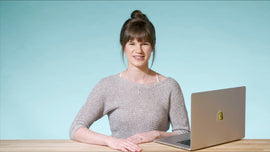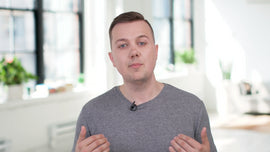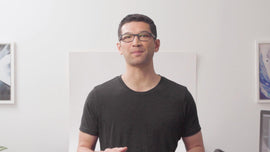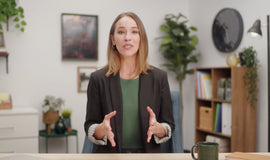Do you know what the average e-commerce site's conversion rate is? One to two percent. That means that out of every hundred people who come to a site, one or two buys. Do you know why conversion rates are so low? Lack of trust. You see, buying something online is like getting engaged. Most websites propose on the first date, and unsurprisingly, they fail. How do you increase the odds that she will say yes? You date her for a while.
You get to know her, you build up trust over time, and only then you pop the question. An email welcome series performs this function for you. They take a brand-new email subscriber who doesn't know you from Adam, they introduce your brand and your products and eventually ask for a sale. Done right, they can easily triple your baseline conversion rate. In this lesson, I'll teach you how to give your potential customers a warm welcome to your store by creating a welcome experience known as the welcome email or series.
You'll also learn more about why you need a welcome series, the best practices for the welcome series and what content should be in your welcome series. So, let's start with what exactly a welcome email or series is. A welcome email or welcome series is your potential customers' introduction to your brand. It's either a single email or a series of automated emails you send to a potential customer when he or she signs up for your email list.
This will help you start building a relationship and organically move that potential customer down the funnel from subscriber to buyer. Welcome series are where you build trust, educate and inform your potential customer and also provide real value. On average, an email welcome series generates 320 percent more revenue than a regular broadcast email. It also has a higher open rate.
They work. You should have one. So let's dive into some best practices. Number one, thank the person for subscribing. This person made a choice to give you his or her email address at a time when we have very crowded inboxes, so thank them for signing up. Number two, spam the living daylights out of them. No, just kidding. Number two is actually set transparent expectations. Let them know how often they can expect to hear from you.
I recommend once a week or biweekly as a good cadence for communication. Number three, personalize your message. Remember Godin's description of great email, personal, relevant and anticipated. You can personalize it in the subject line or in the main body of the email. Number four, send your email welcome sequence automatically. When someone subscribes, they'll immediately get an email. Easy enough, right?
Number five, have a clear call to action for every email you send. What do you want the subscriber to do? Access a coupon code that's available for a limited time? Read your About Us page? Send you an email response? People need to be told what to do. You've got to make sure you tell your potential customer exactly what to do after they receive an email from you. Number six, remember to test your content on mobile.
Nowadays, nearly half of emails are being seen on mobile devices. So, before sending your email, be sure you've tested the email on mobile. Number seven, the final best practices to test your welcome series. Before sending your emails publicly, be sure to test the content to ensure the links work. Okay, now let's talk about what content you should create for your welcome series. If you're brand new to e-commerce, I recommend keeping it simple and sending one email for the official welcome.
Get this set up right after watching this video. If you're more advanced, you could create a welcome series or sequence. A welcome series is multiple emails that are sent to over a couple of days or months. So what content might you include in a welcome series? If you're just starting out, a coupon's easy. "Thanks for subscribing, save 10 percent on your first purchase if you buy this week." Quick, easy and effective.
But we can do better. If you're building out a complete series, don't go right for the hard sell. Build up trust first, use your emails to highlight testimonials from happy customers, show your product in action in a video, introduce you as the founder and tell your story, and things like that. There's really no limit to what you can put in your welcome series. Now, remember that overall you need to resist the urge to get too fancy or complex here. Put yourself in the shoes your ideal customer.
What do you think would actually add value to their lives, and what can you get set up as soon as possible? Get a Google doc or Word doc open and use a pen and paper if you're old school and get ready and start writing.











































